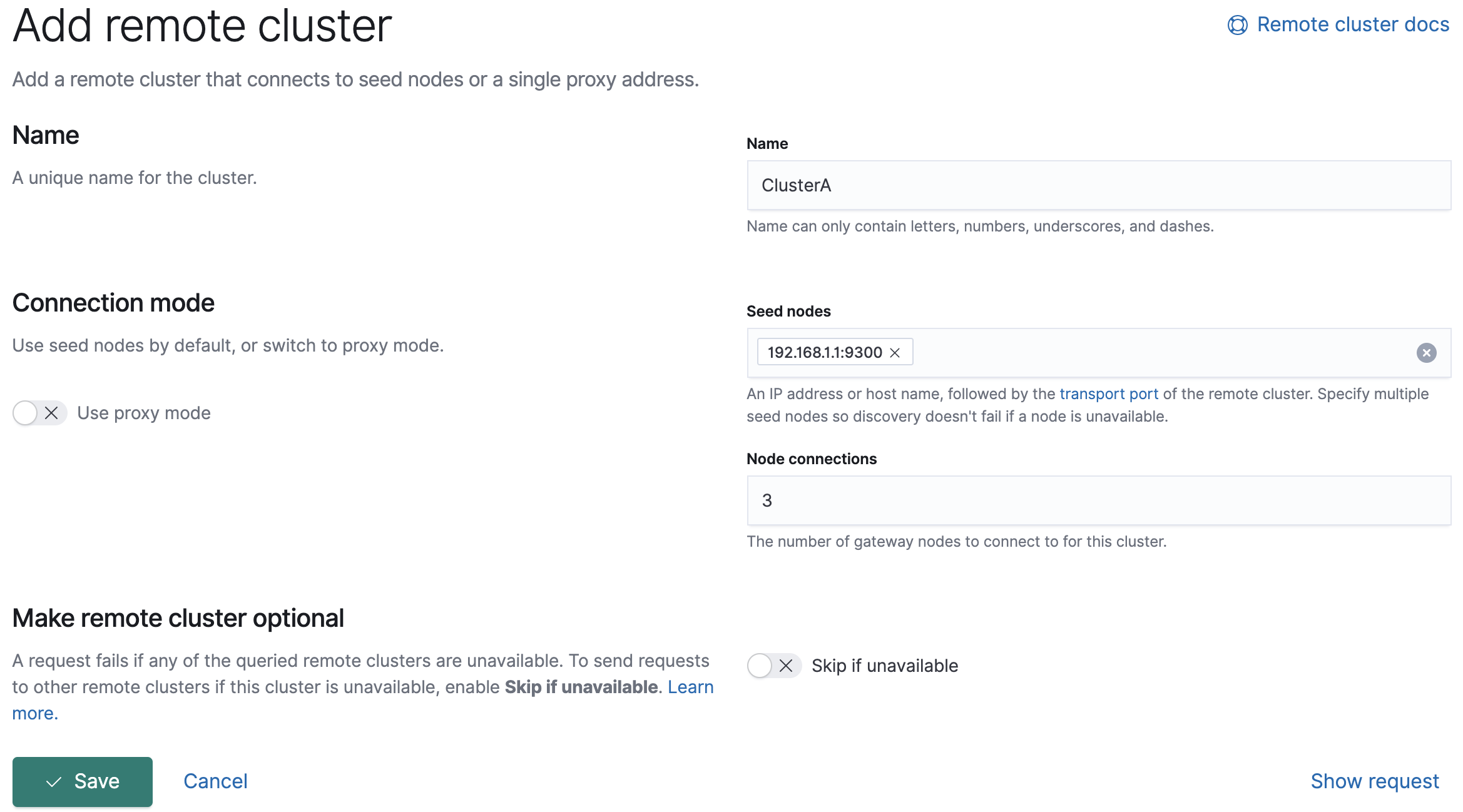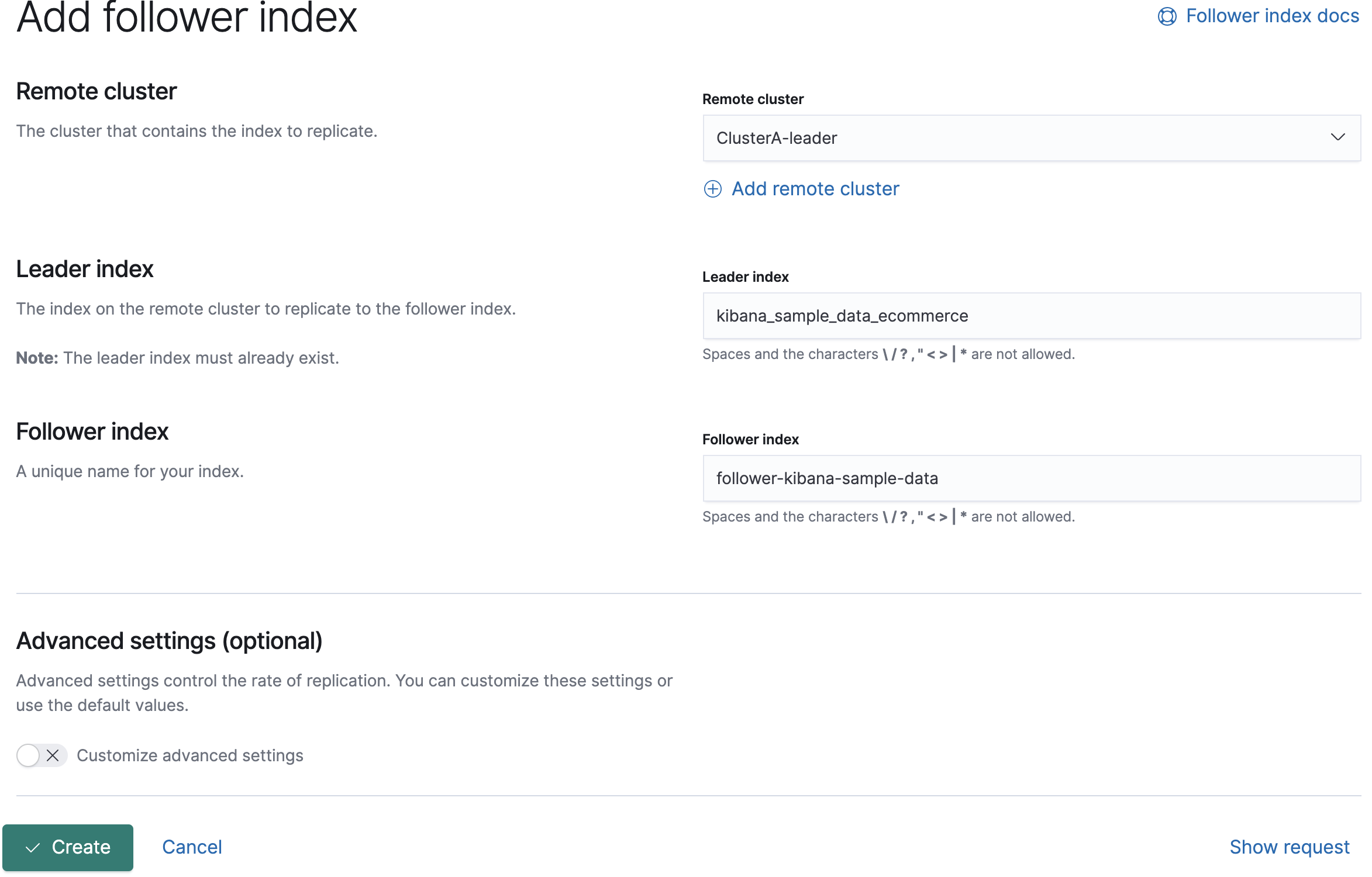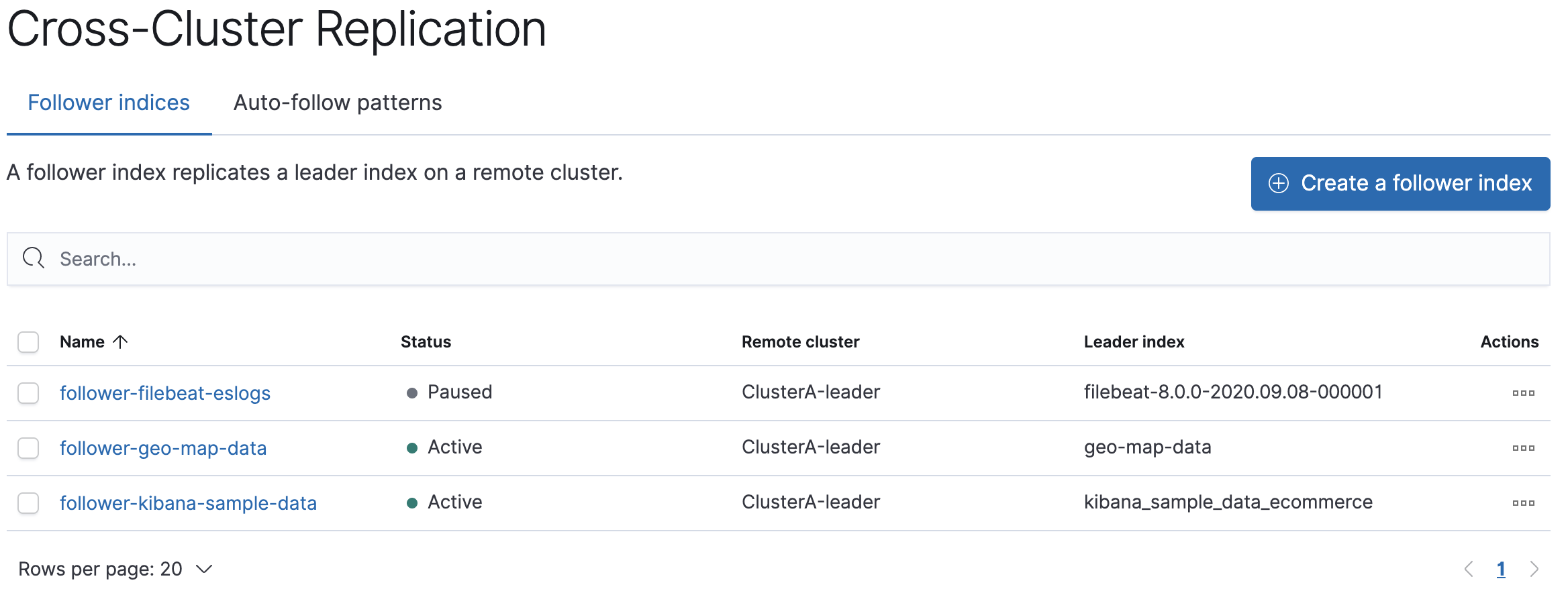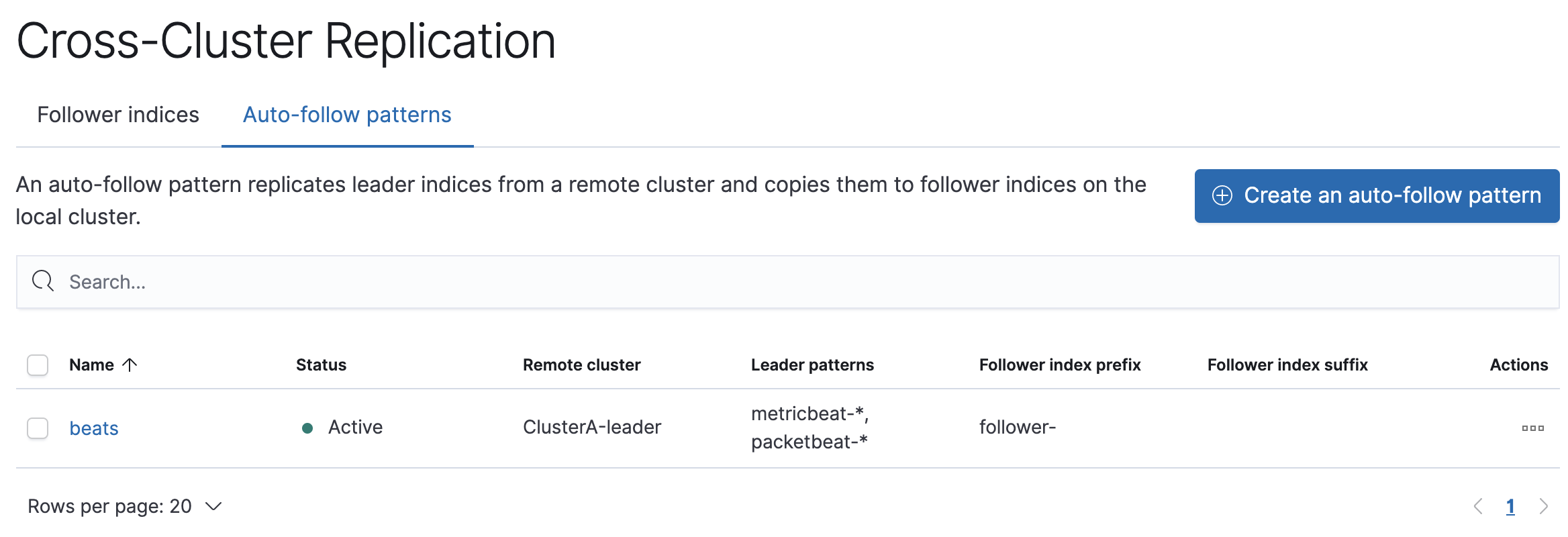- Elasticsearch Guide: other versions:
- What is Elasticsearch?
- What’s new in 7.9
- Getting started with Elasticsearch
- Set up Elasticsearch
- Installing Elasticsearch
- Configuring Elasticsearch
- Setting JVM options
- Secure settings
- Auditing settings
- Circuit breaker settings
- Cluster-level shard allocation and routing settings
- Cross-cluster replication settings
- Discovery and cluster formation settings
- Field data cache settings
- HTTP
- Index lifecycle management settings
- Index management settings
- Index recovery settings
- Indexing buffer settings
- License settings
- Local gateway settings
- Logging
- Machine learning settings
- Monitoring settings
- Node
- Network settings
- Node query cache settings
- Search settings
- Security settings
- Shard request cache settings
- Snapshot lifecycle management settings
- Transforms settings
- Transport
- Thread pools
- Watcher settings
- Important Elasticsearch configuration
- Important System Configuration
- Bootstrap Checks
- Heap size check
- File descriptor check
- Memory lock check
- Maximum number of threads check
- Max file size check
- Maximum size virtual memory check
- Maximum map count check
- Client JVM check
- Use serial collector check
- System call filter check
- OnError and OnOutOfMemoryError checks
- Early-access check
- G1GC check
- All permission check
- Discovery configuration check
- Bootstrap Checks for X-Pack
- Starting Elasticsearch
- Stopping Elasticsearch
- Discovery and cluster formation
- Add and remove nodes in your cluster
- Full-cluster restart and rolling restart
- Remote clusters
- Set up X-Pack
- Configuring X-Pack Java Clients
- Plugins
- Upgrade Elasticsearch
- Index modules
- Mapping
- Text analysis
- Overview
- Concepts
- Configure text analysis
- Built-in analyzer reference
- Tokenizer reference
- Token filter reference
- Apostrophe
- ASCII folding
- CJK bigram
- CJK width
- Classic
- Common grams
- Conditional
- Decimal digit
- Delimited payload
- Dictionary decompounder
- Edge n-gram
- Elision
- Fingerprint
- Flatten graph
- Hunspell
- Hyphenation decompounder
- Keep types
- Keep words
- Keyword marker
- Keyword repeat
- KStem
- Length
- Limit token count
- Lowercase
- MinHash
- Multiplexer
- N-gram
- Normalization
- Pattern capture
- Pattern replace
- Phonetic
- Porter stem
- Predicate script
- Remove duplicates
- Reverse
- Shingle
- Snowball
- Stemmer
- Stemmer override
- Stop
- Synonym
- Synonym graph
- Trim
- Truncate
- Unique
- Uppercase
- Word delimiter
- Word delimiter graph
- Character filters reference
- Normalizers
- Index templates
- Data streams
- Ingest node
- Search your data
- Query DSL
- Aggregations
- Bucket Aggregations
- Adjacency matrix
- Auto-interval date histogram
- Children
- Composite
- Date histogram
- Date range
- Diversified sampler
- Filter
- Filters
- Geo-distance
- Geohash grid
- Geotile grid
- Global
- Histogram
- IP range
- Missing
- Nested
- Parent
- Range
- Rare terms
- Reverse nested
- Sampler
- Significant terms
- Significant text
- Terms
- Variable width histogram
- Subtleties of bucketing range fields
- Metrics Aggregations
- Pipeline Aggregations
- Bucket Aggregations
- EQL
- SQL access
- Overview
- Getting Started with SQL
- Conventions and Terminology
- Security
- SQL REST API
- SQL Translate API
- SQL CLI
- SQL JDBC
- SQL ODBC
- SQL Client Applications
- SQL Language
- Functions and Operators
- Comparison Operators
- Logical Operators
- Math Operators
- Cast Operators
- LIKE and RLIKE Operators
- Aggregate Functions
- Grouping Functions
- Date/Time and Interval Functions and Operators
- Full-Text Search Functions
- Mathematical Functions
- String Functions
- Type Conversion Functions
- Geo Functions
- Conditional Functions And Expressions
- System Functions
- Reserved keywords
- SQL Limitations
- Scripting
- ILM: Manage the index lifecycle
- Monitor a cluster
- Frozen indices
- Roll up or transform your data
- Set up a cluster for high availability
- Snapshot and restore
- Secure a cluster
- Overview
- Configuring security
- User authentication
- Built-in users
- Internal users
- Token-based authentication services
- Realms
- Realm chains
- Active Directory user authentication
- File-based user authentication
- LDAP user authentication
- Native user authentication
- OpenID Connect authentication
- PKI user authentication
- SAML authentication
- Kerberos authentication
- Integrating with other authentication systems
- Enabling anonymous access
- Controlling the user cache
- Configuring SAML single-sign-on on the Elastic Stack
- Configuring single sign-on to the Elastic Stack using OpenID Connect
- User authorization
- Built-in roles
- Defining roles
- Granting access to Stack Management features
- Security privileges
- Document level security
- Field level security
- Granting privileges for data streams and index aliases
- Mapping users and groups to roles
- Setting up field and document level security
- Submitting requests on behalf of other users
- Configuring authorization delegation
- Customizing roles and authorization
- Enabling audit logging
- Encrypting communications
- Restricting connections with IP filtering
- Cross cluster search, clients, and integrations
- Tutorial: Getting started with security
- Tutorial: Encrypting communications
- Troubleshooting
- Some settings are not returned via the nodes settings API
- Authorization exceptions
- Users command fails due to extra arguments
- Users are frequently locked out of Active Directory
- Certificate verification fails for curl on Mac
- SSLHandshakeException causes connections to fail
- Common SSL/TLS exceptions
- Common Kerberos exceptions
- Common SAML issues
- Internal Server Error in Kibana
- Setup-passwords command fails due to connection failure
- Failures due to relocation of the configuration files
- Limitations
- Alerting on cluster and index events
- Command line tools
- How To
- Glossary of terms
- REST APIs
- API conventions
- cat APIs
- cat aliases
- cat allocation
- cat anomaly detectors
- cat count
- cat data frame analytics
- cat datafeeds
- cat fielddata
- cat health
- cat indices
- cat master
- cat nodeattrs
- cat nodes
- cat pending tasks
- cat plugins
- cat recovery
- cat repositories
- cat shards
- cat segments
- cat snapshots
- cat task management
- cat templates
- cat thread pool
- cat trained model
- cat transforms
- Cluster APIs
- Cluster allocation explain
- Cluster get settings
- Cluster health
- Cluster reroute
- Cluster state
- Cluster stats
- Cluster update settings
- Nodes feature usage
- Nodes hot threads
- Nodes info
- Nodes reload secure settings
- Nodes stats
- Pending cluster tasks
- Remote cluster info
- Task management
- Voting configuration exclusions
- Cross-cluster replication APIs
- Data stream APIs
- Document APIs
- Enrich APIs
- Explore API
- Index APIs
- Add index alias
- Analyze
- Clear cache
- Clone index
- Close index
- Create index
- Delete index
- Delete index alias
- Delete component template
- Delete index template
- Delete index template (legacy)
- Flush
- Force merge
- Freeze index
- Get component template
- Get field mapping
- Get index
- Get index alias
- Get index settings
- Get index template
- Get index template (legacy)
- Get mapping
- Index alias exists
- Index exists
- Index recovery
- Index segments
- Index shard stores
- Index stats
- Index template exists
- Open index
- Put index template
- Put index template (legacy)
- Put component template
- Put mapping
- Refresh
- Rollover index
- Shrink index
- Simulate index
- Simulate template
- Split index
- Synced flush
- Type exists
- Unfreeze index
- Update index alias
- Update index settings
- Resolve index
- List dangling indices
- Import dangling index
- Delete dangling index
- Index lifecycle management API
- Ingest APIs
- Info API
- Licensing APIs
- Machine learning anomaly detection APIs
- Add events to calendar
- Add jobs to calendar
- Close jobs
- Create jobs
- Create calendar
- Create datafeeds
- Create filter
- Delete calendar
- Delete datafeeds
- Delete events from calendar
- Delete filter
- Delete forecast
- Delete jobs
- Delete jobs from calendar
- Delete model snapshots
- Delete expired data
- Estimate model memory
- Find file structure
- Flush jobs
- Forecast jobs
- Get buckets
- Get calendars
- Get categories
- Get datafeeds
- Get datafeed statistics
- Get influencers
- Get jobs
- Get job statistics
- Get machine learning info
- Get model snapshots
- Get overall buckets
- Get scheduled events
- Get filters
- Get records
- Open jobs
- Post data to jobs
- Preview datafeeds
- Revert model snapshots
- Set upgrade mode
- Start datafeeds
- Stop datafeeds
- Update datafeeds
- Update filter
- Update jobs
- Update model snapshots
- Machine learning data frame analytics APIs
- Create data frame analytics jobs
- Create trained model
- Update data frame analytics jobs
- Delete data frame analytics jobs
- Delete trained model
- Evaluate data frame analytics
- Explain data frame analytics API
- Get data frame analytics jobs
- Get data frame analytics jobs stats
- Get trained model
- Get trained model stats
- Start data frame analytics jobs
- Stop data frame analytics jobs
- Migration APIs
- Reload search analyzers
- Rollup APIs
- Search APIs
- Security APIs
- Authenticate
- Change passwords
- Clear cache
- Clear roles cache
- Clear privileges cache
- Create API keys
- Create or update application privileges
- Create or update role mappings
- Create or update roles
- Create or update users
- Delegate PKI authentication
- Delete application privileges
- Delete role mappings
- Delete roles
- Delete users
- Disable users
- Enable users
- Get API key information
- Get application privileges
- Get builtin privileges
- Get role mappings
- Get roles
- Get token
- Get users
- Grant API keys
- Has privileges
- Invalidate API key
- Invalidate token
- OpenID Connect Prepare Authentication API
- OpenID Connect authenticate API
- OpenID Connect logout API
- SAML prepare authentication API
- SAML authenticate API
- SAML logout API
- SAML invalidate API
- SSL certificate
- Snapshot and restore APIs
- Snapshot lifecycle management API
- Transform APIs
- Usage API
- Watcher APIs
- Definitions
- Breaking changes
- Release notes
- Elasticsearch version 7.9.3
- Elasticsearch version 7.9.2
- Elasticsearch version 7.9.1
- Elasticsearch version 7.9.0
- Elasticsearch version 7.8.1
- Elasticsearch version 7.8.0
- Elasticsearch version 7.7.1
- Elasticsearch version 7.7.0
- Elasticsearch version 7.6.2
- Elasticsearch version 7.6.1
- Elasticsearch version 7.6.0
- Elasticsearch version 7.5.2
- Elasticsearch version 7.5.1
- Elasticsearch version 7.5.0
- Elasticsearch version 7.4.2
- Elasticsearch version 7.4.1
- Elasticsearch version 7.4.0
- Elasticsearch version 7.3.2
- Elasticsearch version 7.3.1
- Elasticsearch version 7.3.0
- Elasticsearch version 7.2.1
- Elasticsearch version 7.2.0
- Elasticsearch version 7.1.1
- Elasticsearch version 7.1.0
- Elasticsearch version 7.0.0
- Elasticsearch version 7.0.0-rc2
- Elasticsearch version 7.0.0-rc1
- Elasticsearch version 7.0.0-beta1
- Elasticsearch version 7.0.0-alpha2
- Elasticsearch version 7.0.0-alpha1
Tutorial: Set up cross-cluster replication
editTutorial: Set up cross-cluster replication
editUse this guide to set up cross-cluster replication (CCR) between clusters in two datacenters. Replicating your data across datacenters provides several benefits:
- Brings data closer to your users or application server to reduce latency and response time
- Provides your mission-critical applications with the tolerance to withstand datacenter or region outages
In this guide, you’ll learn how to:
- Configure a remote cluster with a leader index
- Create a follower index on a local cluster
- Create an auto-follow pattern to automatically follow time series indices that are periodically created in a remote cluster
You can manually create follower indices to replicate specific indices on a remote cluster, or configure auto-follow patterns to replicate rolling time series indices.
Prerequisites
editTo complete this tutorial, you need:
- A license on both clusters that includes cross-cluster replication. Activate a free 30-day trial.
-
The
read_ccrcluster privilege andmonitorandreadprivileges for the leader index on the remote cluster. Configure remote cluster privileges. -
The
manage_ccrcluster privilege andmonitor,read,writeandmanage_follow_indexprivileges to configure remote clusters and follower indices on the local cluster. Configure local cluster privileges. - An index on the remote cluster that contains the data you want to replicate. This tutorial uses the sample eCommerce orders data set. Load sample data.
Connect to a remote cluster
editTo replicate an index on a remote cluster (Cluster A) to a local cluster (Cluster B), you configure Cluster A as a remote on Cluster B.

To configure a remote cluster from Stack Management in Kibana:
- Select Remote Clusters from the side navigation.
-
Specify the IP address or host name of the remote cluster (ClusterB),
followed by the transport port of the remote cluster (defaults to
9300). For example,192.168.1.1:9300.

API example
Use the cluster update settings API to add a remote cluster:
PUT /_cluster/settings { "persistent" : { "cluster" : { "remote" : { "leader" : { "seeds" : [ "127.0.0.1:9300" ] } } } } }
You can verify that the local cluster is successfully connected to the remote cluster.
GET /_remote/info
The API will respond by showing that the local cluster is connected to the remote cluster.
Enable soft deletes on leader indices
editTo follow an index, it must have been created with soft deletes enabled. If the index doesn’t have soft deletes enabled, you must reindex it and use the new index as the leader index. Soft deletes are enabled by default on new indices created with Elasticsearch 7.0.0 and later.
Create a follower index to replicate a specific index
editWhen you create a follower index, you reference the remote cluster and the leader index in your remote cluster.
To create a follower index from Stack Management in Kibana:
- Select Cross-Cluster Replication in the side navigation and choose the Follower Indices tab.
- Choose the cluster (ClusterA) containing the leader index you want to replicate.
-
Enter the name of the leader index, which is
kibana_sample_data_ecommerceif you are following the tutorial. -
Enter a name for your follower index, such as
follower-kibana-sample-data.

Elasticsearch initializes the follower using the remote recovery process, which transfers the existing Lucene segment files from the leader index to the follower index. The index status changes to Paused. When the remote recovery process is complete, the index following begins and the status changes to Active.
When you index documents into your leader index, Elasticsearch replicates the documents in the follower index.

API example
Use the create follower API to create follower indices. When you create a follower index, you must reference the remote cluster and the leader index that you created in the remote cluster.
When initiating the follower request, the response returns before the
remote recovery process completes. To wait for the process
to complete, add the wait_for_active_shards parameter to your request.
PUT /server-metrics-follower/_ccr/follow?wait_for_active_shards=1 { "remote_cluster" : "leader", "leader_index" : "server-metrics" }
Use the get follower stats API to inspect the status of replication
Create an auto-follow pattern to replicate time series indices
editYou use auto-follow patterns to automatically create new followers for rolling time series indices. Whenever the name of a new index on the remote cluster matches the auto-follow pattern, a corresponding follower index is added to the local cluster.
An auto-follow pattern specifies the remote cluster you want to replicate from, and one or more index patterns that specify the rolling time series indices you want to replicate.
To create an auto-follow pattern from Stack Management in Kibana:
- Select Cross Cluster Replication in the side navigation and choose the Auto-follow patterns tab.
-
Enter a name for the auto-follow pattern, such as
beats. - Choose the remote cluster that contains the index you want to replicate, which in the example scenario is Cluster A.
-
Enter one or more index patterns that identify the indices you want to
replicate from the remote cluster. For example, enter
metricbeat-* packetbeat-*to automatically create followers for Metricbeat and Packetbeat indices. - Enter follower- as the prefix to apply to the names of the follower indices so you can more easily identify replicated indices.
As new indices matching these patterns are created on the remote, Elasticsearch automatically replicates them to local follower indices.

API example
Use the create auto-follow pattern API to configure auto-follow patterns.
On this page